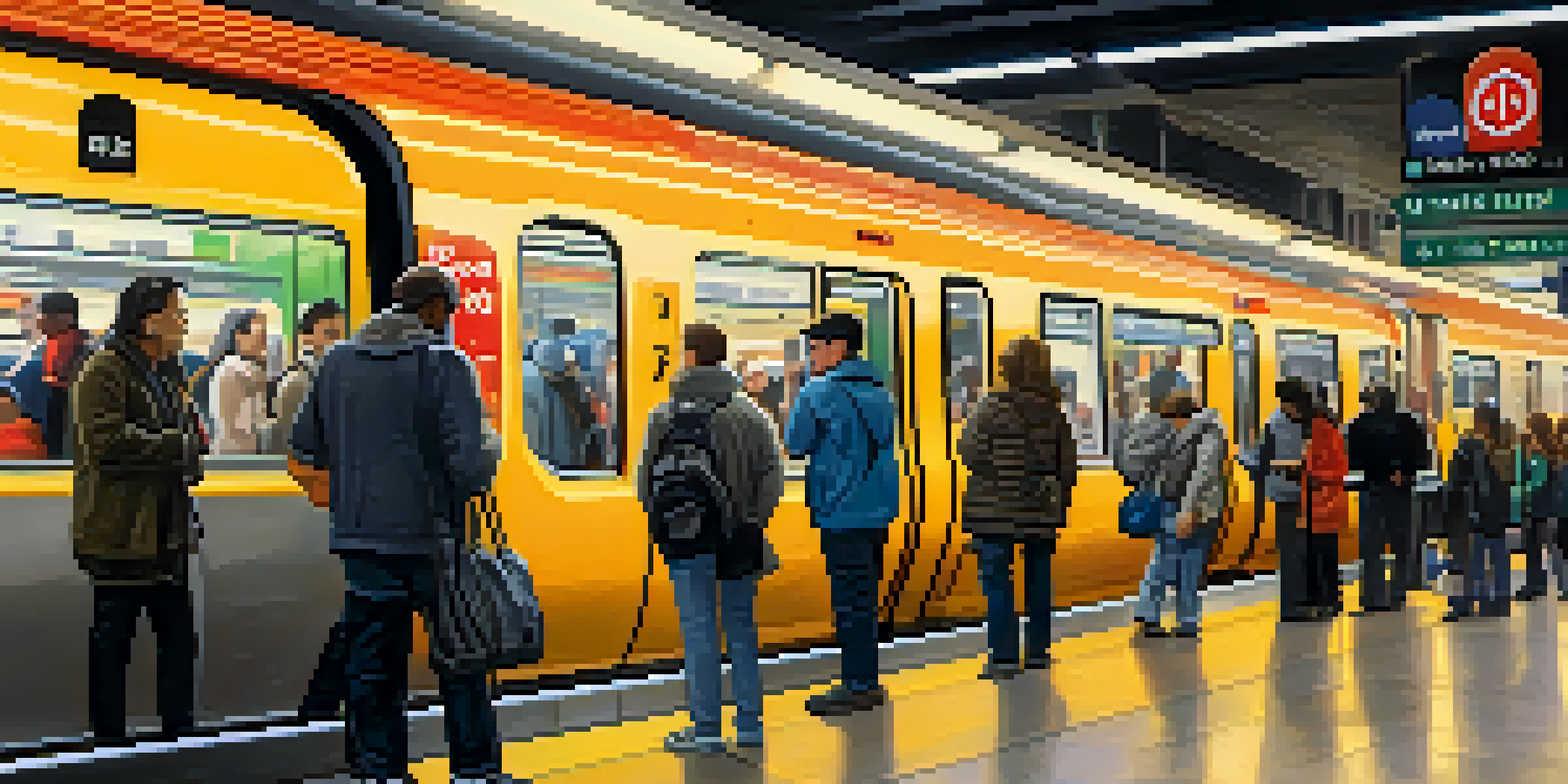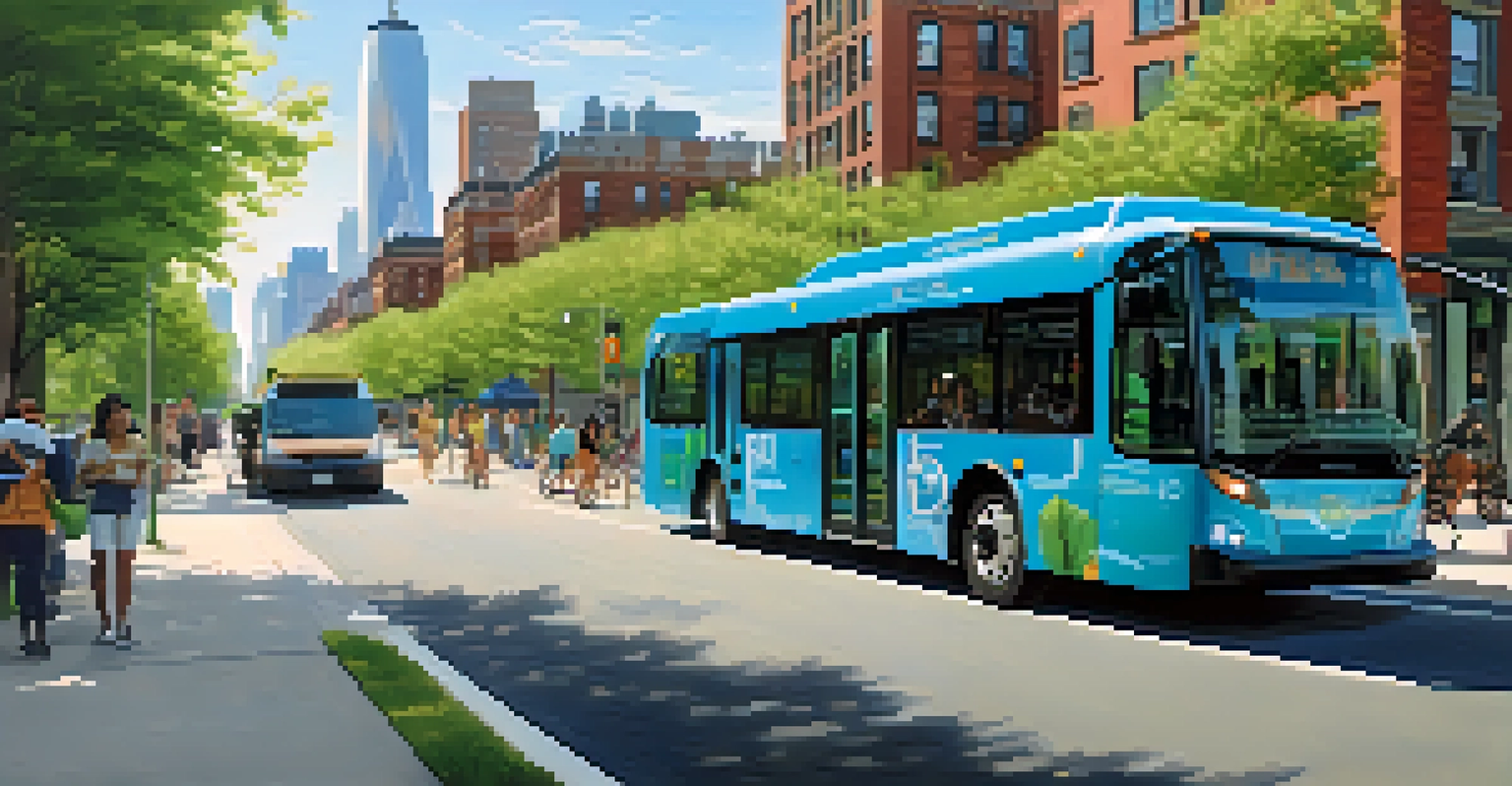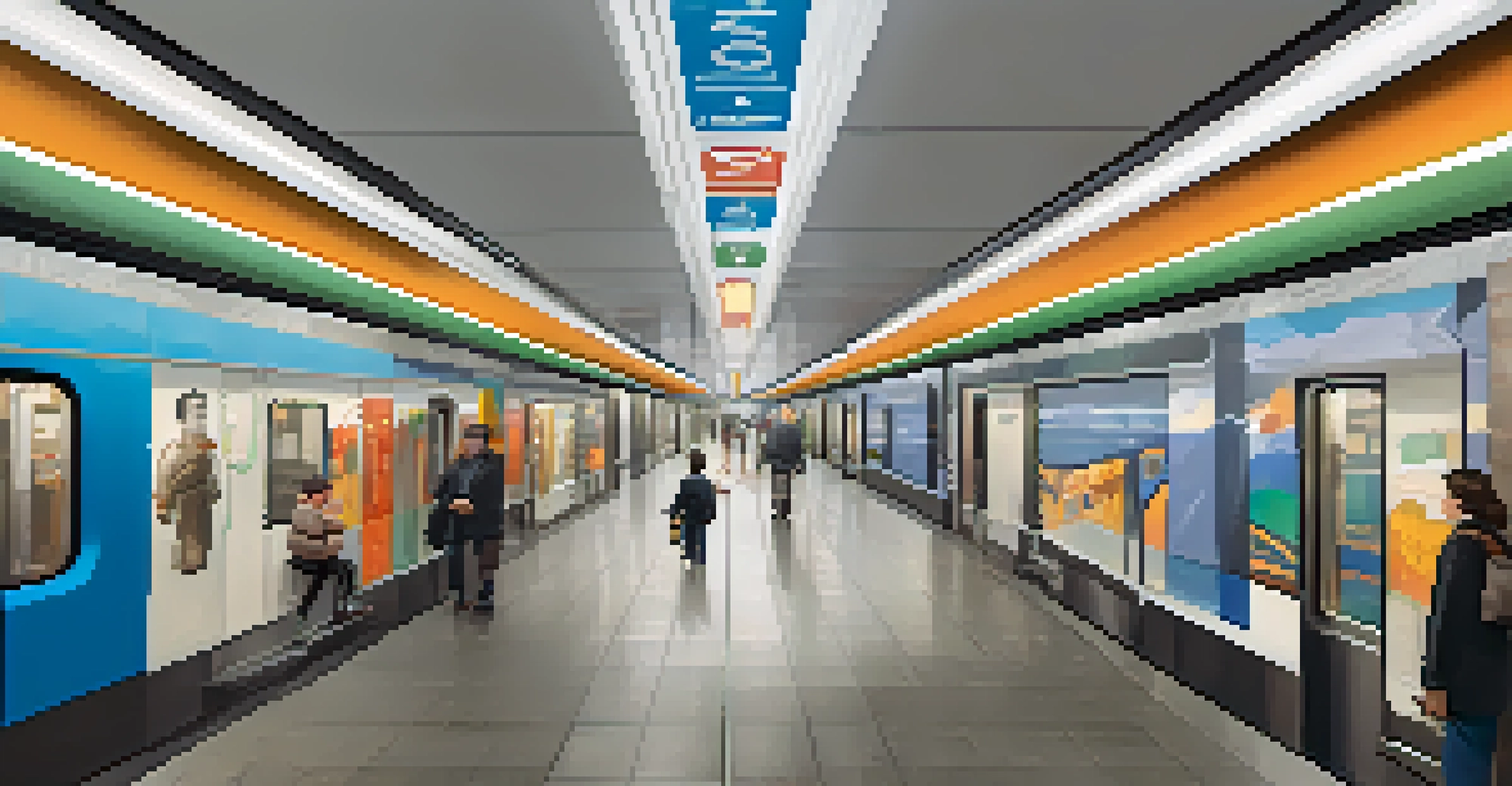Future Developments in NYC Transit: Innovations and Goals

Embracing Technology: The Future of NYC Transit Systems
New York City is set to revolutionize its transit system with cutting-edge technology. Innovations such as contactless payment systems and real-time tracking apps are already in the works. These advancements aim to enhance passenger convenience and streamline operations, ensuring a smoother ride for everyone.
The best way to predict the future is to create it.
Imagine hopping on a subway and being able to see exactly when the next train will arrive right on your phone. This isn't just a dream; it's becoming a reality. As developers integrate smart technology into the transit network, riders will experience a level of efficiency previously unseen in the bustling city.
Related Resource
Moreover, the implementation of AI and machine learning can lead to predictive analytics that optimize service schedules based on usage patterns. This way, the transit system can adapt to demand and ensure that commuters spend less time waiting and more time enjoying their city.
Green Initiatives: Sustainability in NYC Transit
As the world focuses on sustainability, NYC's transit system is also stepping up to the plate. The introduction of electric buses and energy-efficient trains are just some of the green initiatives underway. These changes not only reduce the carbon footprint but also contribute to cleaner air in the city.

For instance, the MTA has already begun rolling out electric buses in various neighborhoods, showcasing a commitment to eco-friendly transportation. This transition is crucial for a city that sees millions of commuters daily, making a significant impact on urban pollution levels.
Tech Innovations Transform Transit
New technologies like real-time tracking and AI are set to revolutionize NYC's transit system, enhancing efficiency and convenience for commuters.
Additionally, NYC is exploring renewable energy sources to power its transit infrastructure. By harnessing solar and wind energy, the city aims to create a transit system that is both efficient and environmentally responsible, paving the way for a more sustainable future.
Accessibility Enhancements: Making Transit Inclusive
Improving accessibility in NYC's transit system is a priority for the city as it seeks to accommodate all riders. This includes upgrading stations with elevators, tactile guidance paths, and auditory signals for the visually impaired. Such enhancements ensure that everyone can navigate the transit system with ease.
Sustainability is no longer about doing less harm. It’s about doing more good.
For example, the ongoing renovations of older subway stations aim to bring them up to modern accessibility standards. This initiative not only benefits those with disabilities but also makes transit easier for parents with strollers and elderly passengers.
Related Resource
By fostering an inclusive environment, NYC's transit system is not just about moving people; it's about connecting communities. The goal is to create a system where every individual, regardless of their physical abilities, can travel seamlessly throughout the city.
Expansion Projects: Growing the NYC Transit Network
The NYC transit network is poised for expansion as new lines and connections are being planned. Projects like the Second Avenue Subway and the extension of the 7 line are set to alleviate congestion and improve access to underserved neighborhoods. These expansions are crucial for accommodating the city's growing population.
By connecting more areas to the subway system, residents can enjoy reduced commute times and increased access to jobs and services. This not only enhances the quality of life for many but also stimulates local economies.
Sustainability Drives Transit Changes
NYC's transit initiatives are embracing electric buses and renewable energy to reduce environmental impact and promote cleaner air.
Furthermore, investing in transit expansion reflects a commitment to long-term urban planning. As NYC continues to evolve, a robust transit network will be essential for maintaining the city's dynamic spirit and keeping it accessible for everyone.
Safety Upgrades: Prioritizing Passenger Security
Passenger safety is paramount for NYC transit, and upcoming developments aim to enhance this aspect significantly. Initiatives like installing more surveillance cameras and improving lighting in stations are being prioritized to ensure a secure environment for commuters. These measures are essential in fostering trust in the public transit system.
Additionally, the MTA is investing in training programs for staff to better handle emergencies and provide assistance to riders. By equipping employees with the right skills, the transit system can respond more effectively to incidents, ensuring a safer experience for all.
Related Resource
Innovations in technology also play a role in enhancing safety. Mobile apps that allow riders to report issues in real-time can help create a more responsive transit environment, where safety concerns are addressed promptly.
Public Engagement: Involving Communities in Transit Planning
Engaging the public in transit planning is key to creating a system that meets the needs of NYC's diverse population. The MTA is making strides in this area by hosting community forums and surveys to gather feedback from riders. This collaborative approach helps ensure that the transit system evolves in a way that truly benefits its users.
For example, by listening to residents' concerns about specific routes or accessibility issues, planners can make informed decisions that reflect the community's needs. This not only fosters trust but also encourages a sense of ownership among riders.
Community Input Shapes Transit Plans
Public engagement in transit planning is crucial for creating a system that meets the diverse needs of NYC's residents.
Moreover, public engagement can lead to innovative ideas that transit authorities might not have considered. When communities have a voice in shaping the transit system, it creates a more responsive and effective network.
Funding Future Transit Developments: Challenges and Solutions
Securing funding for future transit developments in NYC presents unique challenges. With the rising costs of construction and maintenance, finding sustainable financial models is crucial for the success of these projects. Innovative funding solutions, like public-private partnerships, are being explored to bridge the gap.
Additionally, leveraging federal and state funding can provide essential resources for ambitious transit projects. By collaborating with governmental entities, NYC can tap into broader funding pools that support infrastructure improvements.

Ultimately, transparent budgeting and effective financial planning are vital in ensuring that transit goals are met. By prioritizing fiscal responsibility, the city can confidently invest in the future of its transit system, enhancing mobility for generations to come.